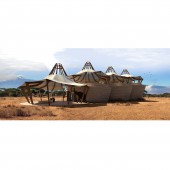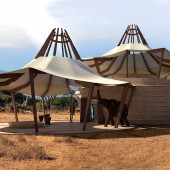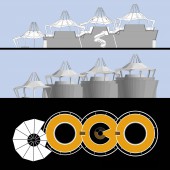Wilderness Pavilion Holographic Presentation of Wildlife by Peter Stasek |
Home > |
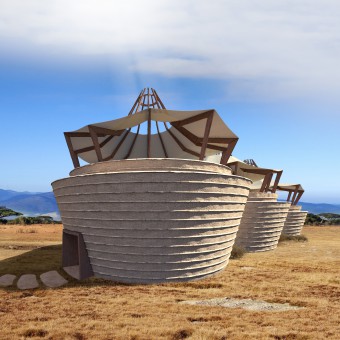 |
|
||||
| DESIGN DETAILS | |||||
| DESIGN NAME: Wilderness Pavilion PRIMARY FUNCTION: Holographic Presentation of Wildlife INSPIRATION: The multiplication of a round clay hut in the form of a 3D print with a filigree tent roof as a folding mechanism that can be opened and closed at any time. UNIQUE PROPERTIES / PROJECT DESCRIPTION: The planned pavilion consists of a forecourt under a tent roof for the reception and the welcome of the guests as well as of three connected round buildings. These are on the ground floor one after the other walkable with the possibility by a spiral staircase "the observatory" on the roof terrace to reach. The observatory is also under tent roofs. The three round buildings on the ground floor form the heart of the exhibition. OPERATION / FLOW / INTERACTION: The exhibition is divided into three sections dealing with the topic "the past", "the present" and "the future" of the Amboseli National Park. The holographic simulation of the animals in the exhibition rooms should be thoughtfully transferred to real nature by every visitor as they walk through the observatory. PROJECT DURATION AND LOCATION: The Pavilion is to be set up as an information point for visitors to the Amboseli National Park under Mount Kilimanjaro in Kenya. The pavilion is supposed to be open during the visitor season. |
PRODUCTION / REALIZATION TECHNOLOGY: The exterior walls of the pavilion are to be realized in 3d printing. The filigree tent construction of the roof is covered with fabric tarpaulins, which can be opened and closed as needed. The entire exhibition in the three round buildings will be realized in the form of holographic projections. SPECIFICATIONS / TECHNICAL PROPERTIES: The total pavilion area is 500 square meters, length = 52m, width = 17m, the height reaches 16m. TAGS: Peter Stasek, Simon Wagner, matrixX architecture, 3d printing architecture, pavilion at kilimanjaro, wildernes pavilion, RESEARCH ABSTRACT: The technology of 3d printing as well as the holographic projections should be integrated into the real nature, without leaving a disturbing impression. CHALLENGE: A pavilion, which as a landmark of the nature park grows together with the landscape and does not represent a foreign body. The layers of the walls applied by 3D printing are to be expressed as a recognizable clay building structure. The presentation of exhibition exhibits in the form of holographic projections is intended to give every visitor an unexpected experience in the form of augmented reality. As you walk through the observatory, all imaginary holographic projections can theoretically be transferred into the landscape. ADDED DATE: 2019-04-02 12:29:30 TEAM MEMBERS (1) : Simon Wagner visualizer IMAGE CREDITS: Peter Stasek architect |
||||
| Visit the following page to learn more: https://www.archilovers.com/peter-stasek |
|||||
| AWARD DETAILS | |
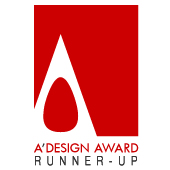 |
Wilderness Pavilion Holographic Presentation of Wildlife by Peter Stasek is Runner-up for A' Design Award in Architecture, Building and Structure Design Category, 2018 - 2019.· Press Members: Login or Register to request an exclusive interview with Peter Stasek. · Click here to register inorder to view the profile and other works by Peter Stasek. |
| SOCIAL |
| + Add to Likes / Favorites | Send to My Email | Comment | Testimonials |

